This double Chocolate Sourdough Bread is slightly sweet, soft on the inside, and crusty on the outside — a bread you’ll want to make over and over. This full sourdough recipe requires no kneading, with the dough coming together in less than 5 minutes.
The recipe provides ingredients in both cups and metric—just switch to your preferred measurement method in the recipe card! You can also choose to use chocolate chips or chunks of your favorite chocolate bar.
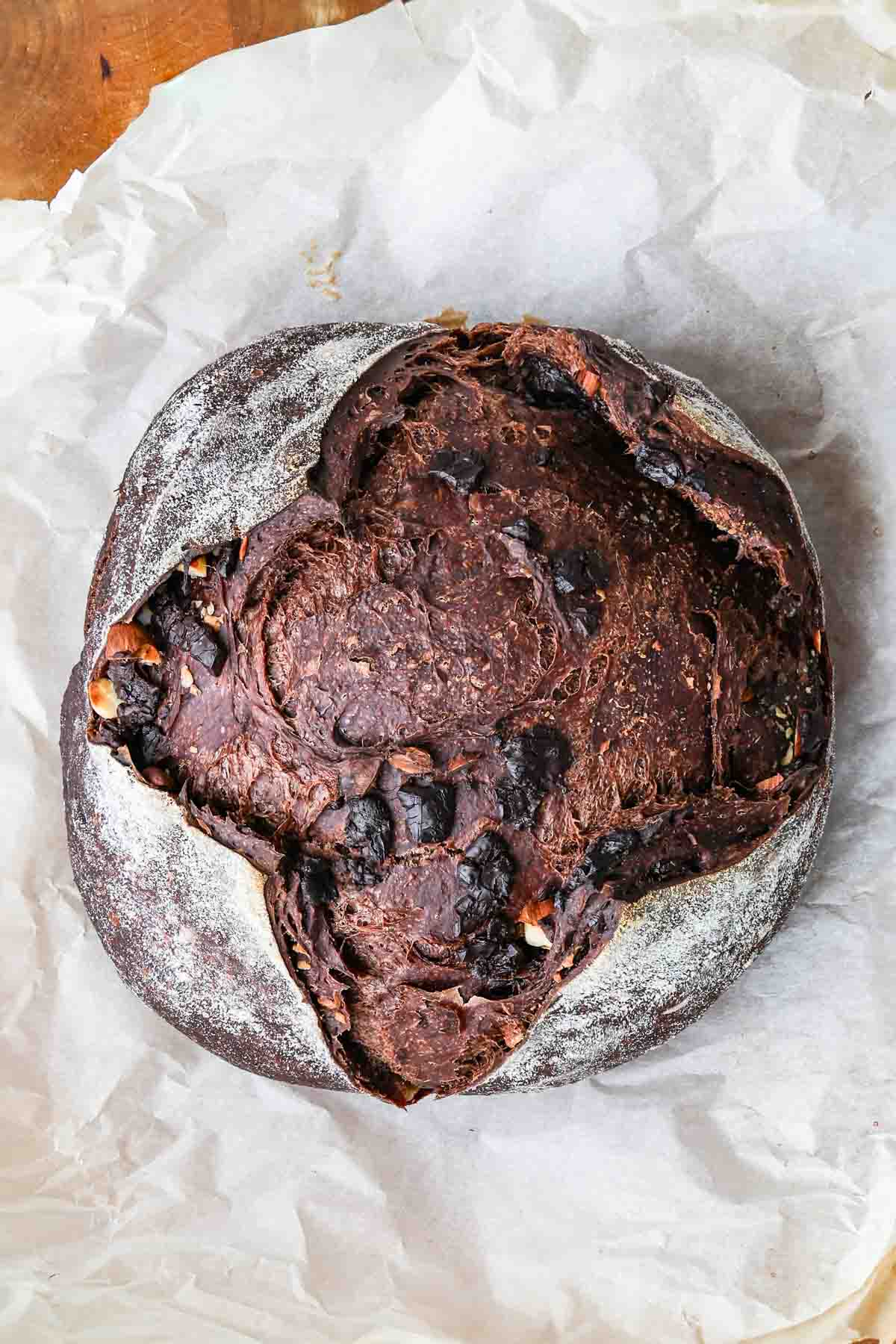
Jump to:
Ingredients
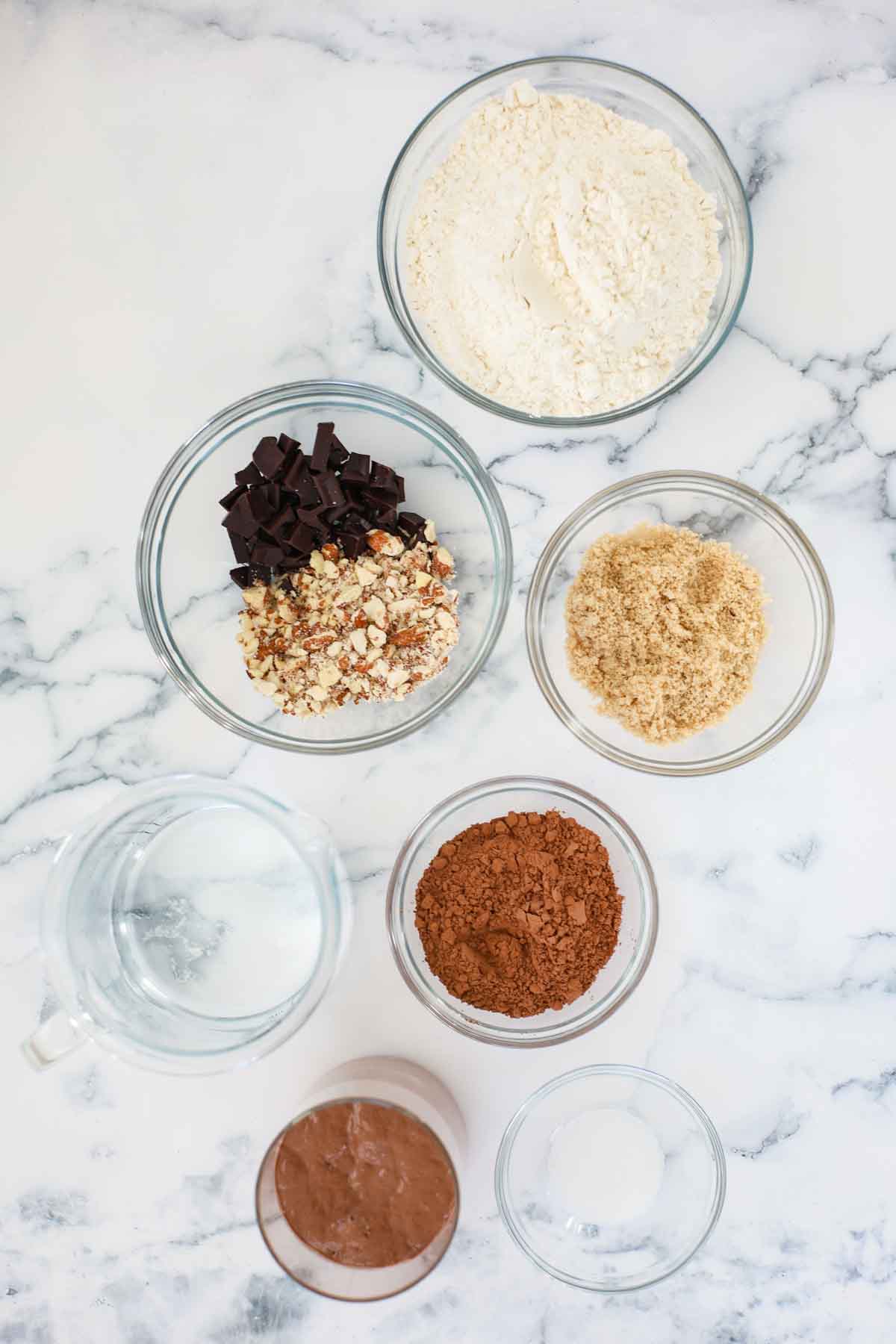
Active Sourdough Starter: Use an active sourdough starter for this recipe. This is my favorite recipe for using a chocolate sourdough starter!
Cocoa: Use 100% cocoa for this recipe. You can use raw, natural, or Dutch-processed cocoa—the latter gives recipes a deep black chocolate color.
Brown Sugar: I like to use brown sugar for this recipe, as it contains molasses, making the flavors even richer. You can substitute it with white sugar if that’s what you have.
Bread Flour: Use bread flour when making this loaf. Using all-purpose flour might result in a wetter dough and could affect the rise (the bread won’t have enough structure to support the add-ins).
Crushed Almonds: I use 70 to 80 grams of whole almonds and pulse them 3 to 4 times in a food processor. Sliced almonds also work.
Chocolate: I prefer to use chunks of my favorite dark chocolate (72%), but you can use your favorite chocolate chips or bar. The crumb is just slightly sweet, so if you’re looking for a sweeter bread, using milk chocolate or even white chocolate, if you’re a fan, is a great option to increase the sweetness.
How to make the dough
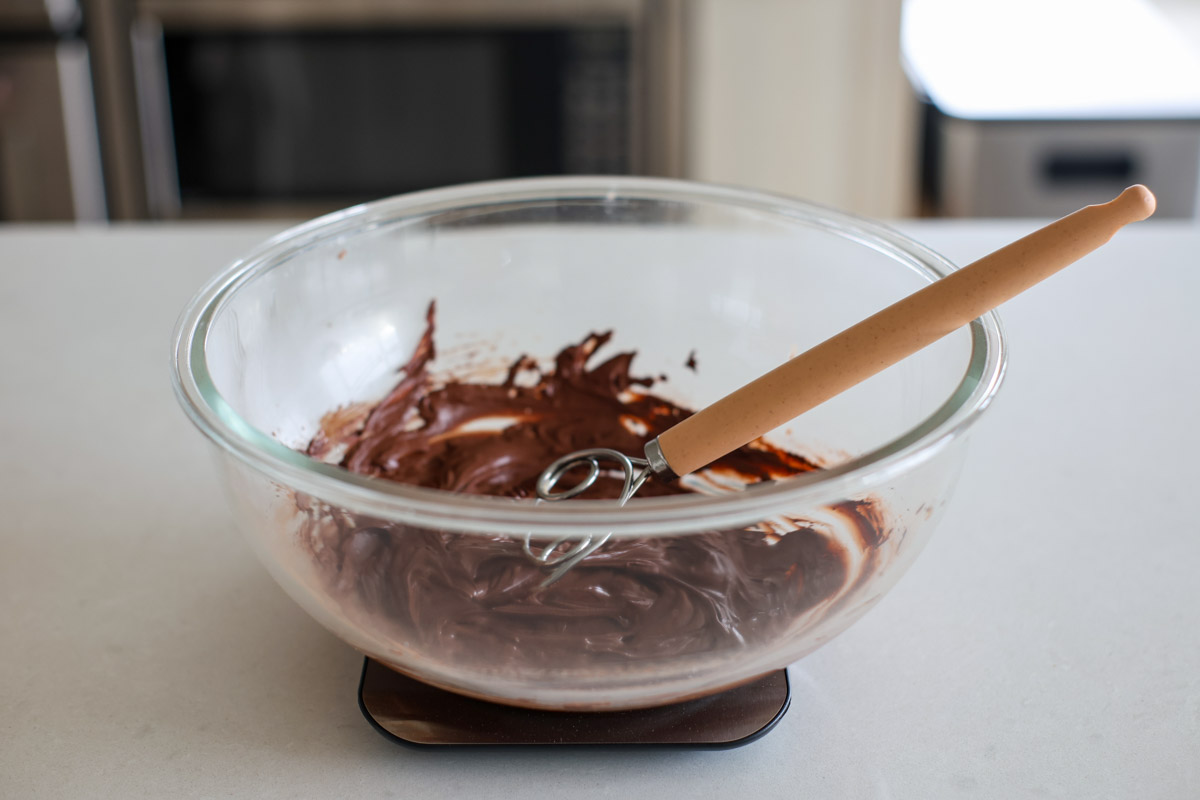
Step 01. I like to start by blooming the cocoa with hot water. Mix both ingredients, whisking until the cocoa powder absorbs all the water. Let it rest for 2 to 3 minutes so it can cool down—don’t mix hot ingredients into the dough, as high heat kills the yeast!
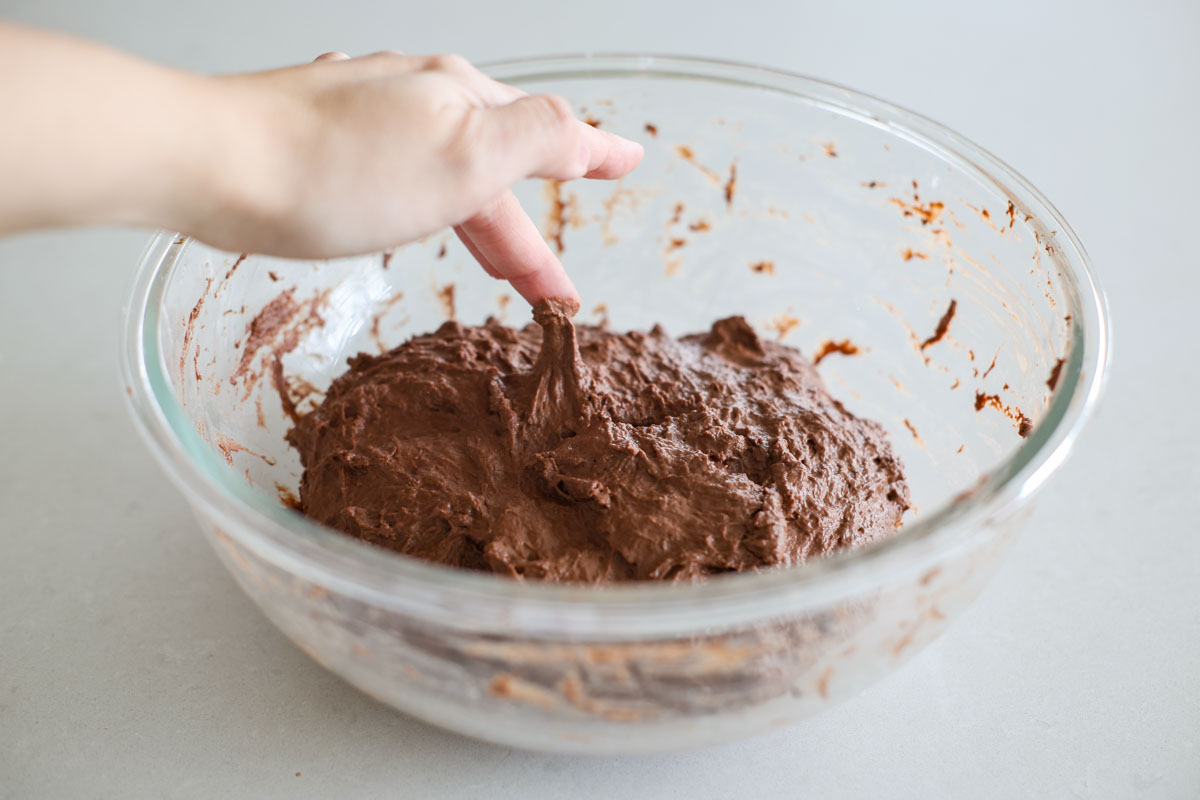
Step 02. In a large bowl, add the cocoa mixture and the remaining water, whisking until combined. Then, add the active sourdough starter, sugar, bread flour, and salt, mixing until a shaggy dough forms. Leave it to rest, covered, for 1 hour. This resting time is important to hydrate the flour, making it easier to stretch and fold.
Use 100% cocoa/cacao powder. Unlike hot cocoa mixtures, pure cocoa absorbs up to 100% of its weight in water. If you use hot cocoa powder (which contains sugar and other additives), the dough will be too wet, and the recipe won’t work properly.
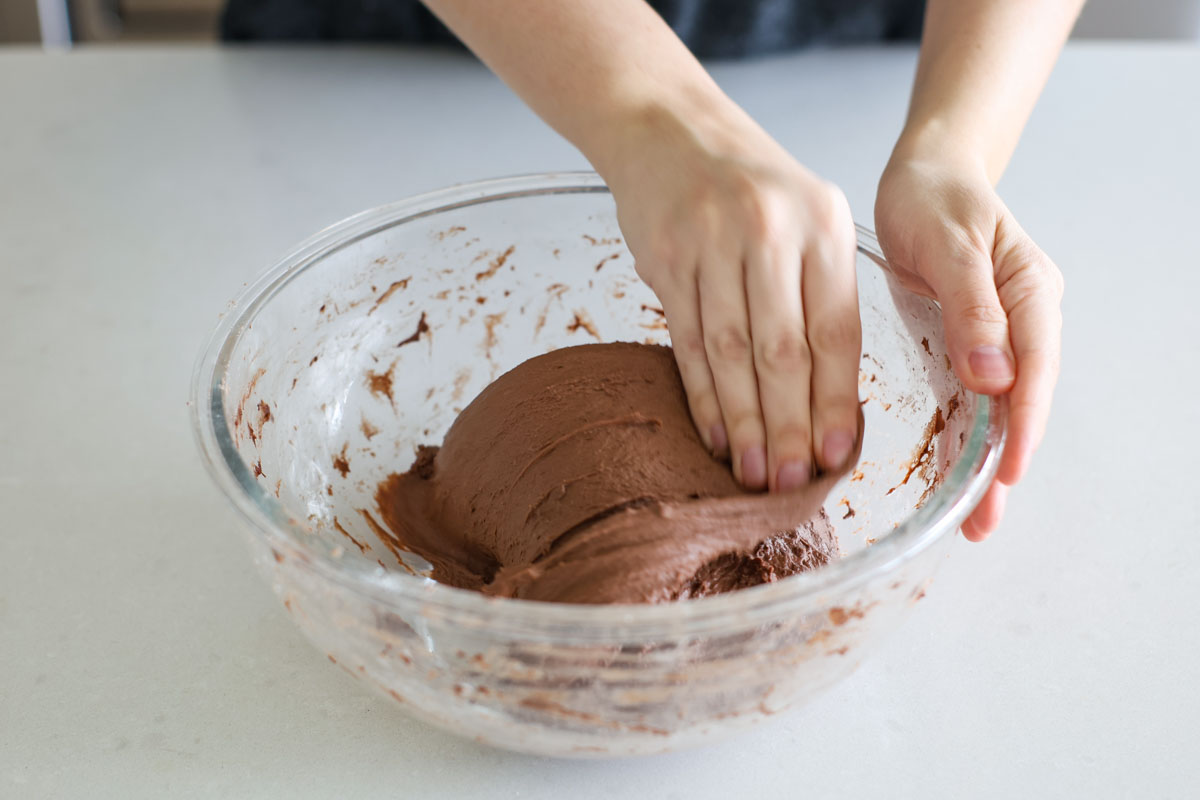
Step 03. After resting, start with the first set of stretches and folds. Perform 4 sets of 4 stretches and folds, with 45 minutes to 1 hour between each set. Rotate the bowl about 90 degrees after each fold. Always cover the bowl well at the end to prevent the dough from developing a skin. If your kitchen is too dry, a damp towel might not retain enough moisture.
You can add the chocolate chunks and crushed almonds while performing the stretches and folds. I prefer to laminate the dough and add these ingredients, as they can cut through the gluten structure. Additionally, laminating helps distribute the chocolate more evenly, reducing the chance of burnt chocolate at the bottom of the dough during baking.
About Bulk Fermentation
At a temperature of 21–23°C/70–73°F, the bulk fermentation of this dough takes about 9 to 11 hours, and the dough should rise no more than 85%. If you’re baking during the summer or in a hot kitchen (26–27°C/79–81°F or higher), bulk fermentation will probably be done in less than 6 hours, with the dough not rising more than 70% of its total size.
If you want to leave the dough fermenting overnight and your kitchen temperature ranges between 19–22°C (66–72°F), you might want to use half the amount of active sourdough starter to avoid over-proofing.
Does chocolate sourdough take longer to bulk ferment? Yes, both cocoa and sugar in this loaf are known to slow fermentation down. Even though this dough has higher hydration than a regular sourdough loaf, bulk fermentation takes me slightly longer. Don’t shape and cold ferment the dough until it has risen at least 50%, or you might get an underproofed loaf.
Signs that bulk fermentation is done:
- The dough will feel less “sticky” and more elastic, have a smoother surface and feel soft yet structured when handled.
- If using a glass bowl, it will come out slowly but without tearing when you tip the bowl.
I don’t preheat my Dutch oven to bake my loaves, only the oven itself. Preheat the oven to 500°F (260°C) and position the rack in the middle.
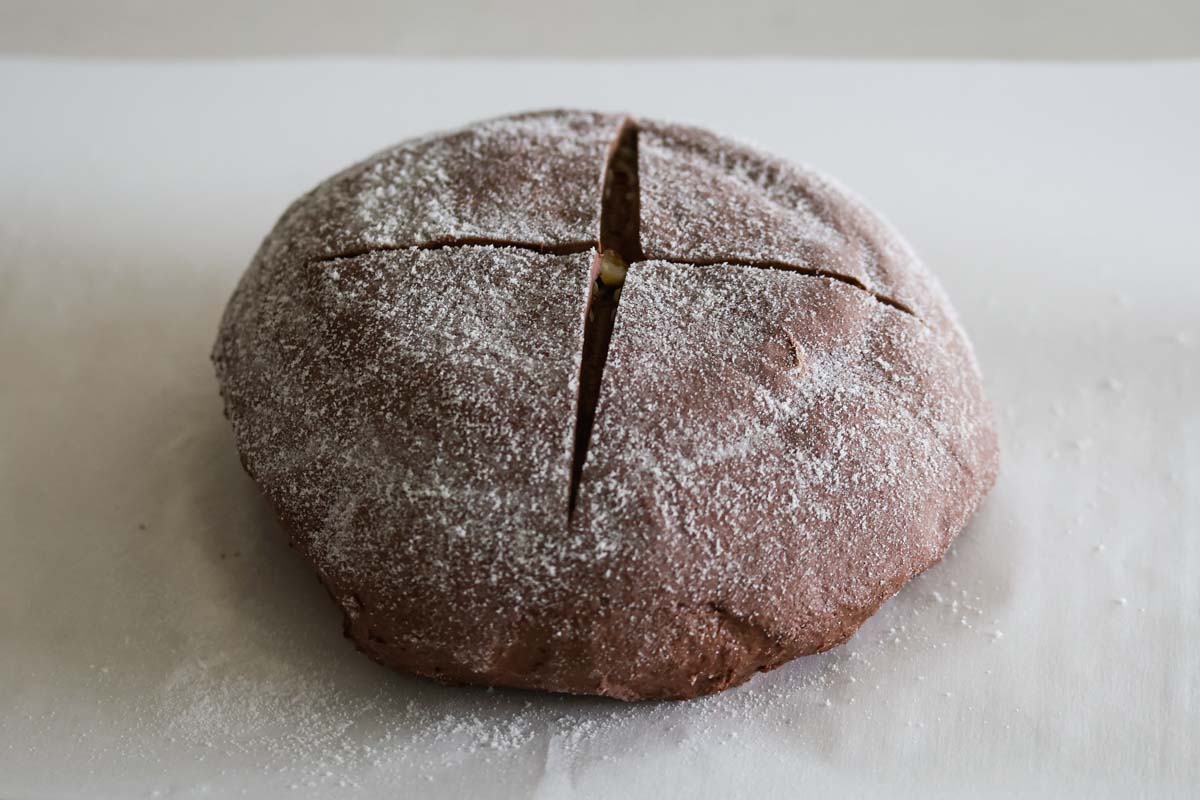
Step 08. When ready, remove the dough from the fridge and place it into a Dutch oven lined with parchment paper. Score the dough using a sharp blade, place the lid on, and put the Dutch oven into the oven. Lower the temperature to 450°F (232°C).
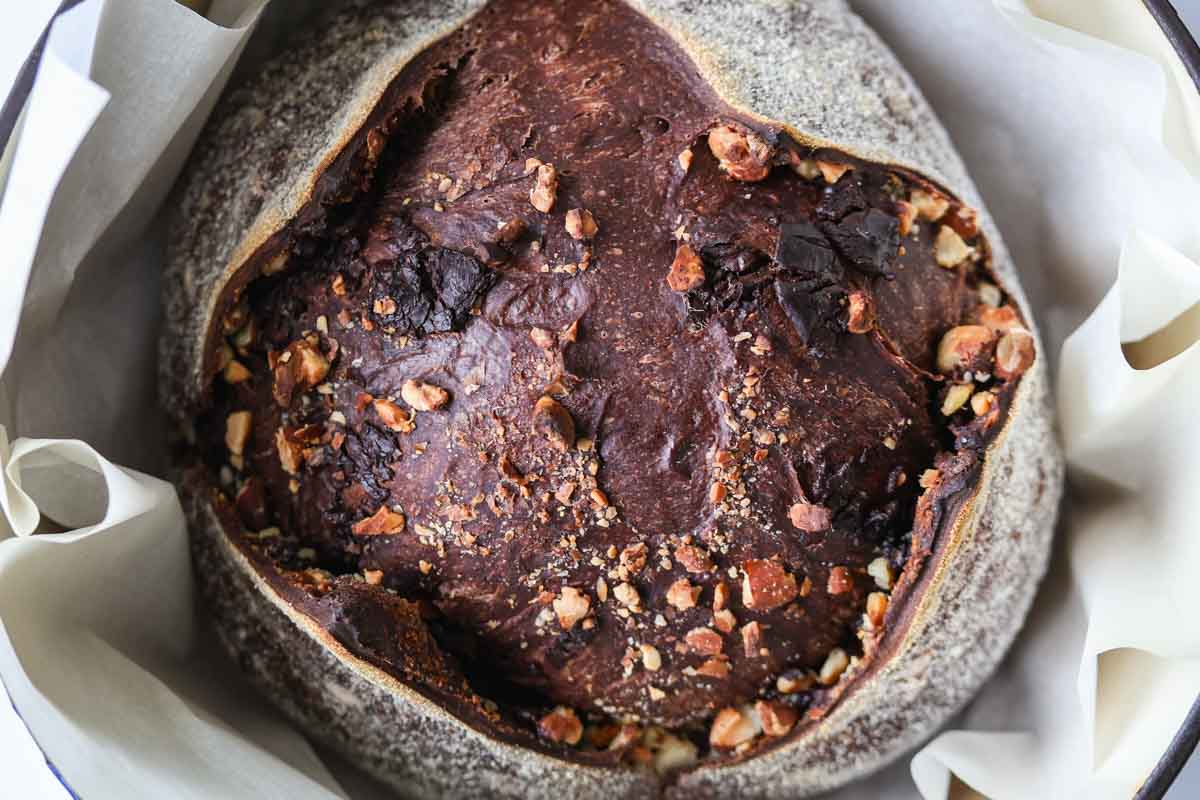
Step 07. Bake at 450°F on the middle rack for 30 minutes before removing the lid. Then, lower the temperature to 425°F (218°C) to prevent the top from burning, and bake for 20 to 25 minutes more, or until the internal temperature reaches 195°F (91°C) at the center.
Wait at least one hour before slicing, or you may end up with a gummy crumb!
Don’t have a Dutch oven? You can use a loaf pan to bake this dough. Shape the dough into a batard, then place it into a loaf pan lined with parchment paper. Let it cold ferment or complete bulk fermentation, score the top with a long slash, and bake at 425°F (218°C). To mimic a Dutch oven for a steamier environment, place another loaf pan on top of the dough, removing it after 20 minutes.
Expert tips
Weighing the ingredients when making this recipe will give you more consistent results. If you’re using cups, remember to measure the wheat flour correctly (don’t pack it; spoon it into the cup and level it off) — the same applies to cocoa powder!
You can leave the almonds out or substitute them with hazelnuts, pecans, or more chocolate chips/chunks.
This dough should not be stiff! Check the video for more visual guidance.
Is your bread burning on the bottom? That might happen if you preheat the Dutch oven, don’t have a middle rack, or are using the bottom rack. You can prevent a burnt bottom by placing a baking sheet under the Dutch oven.
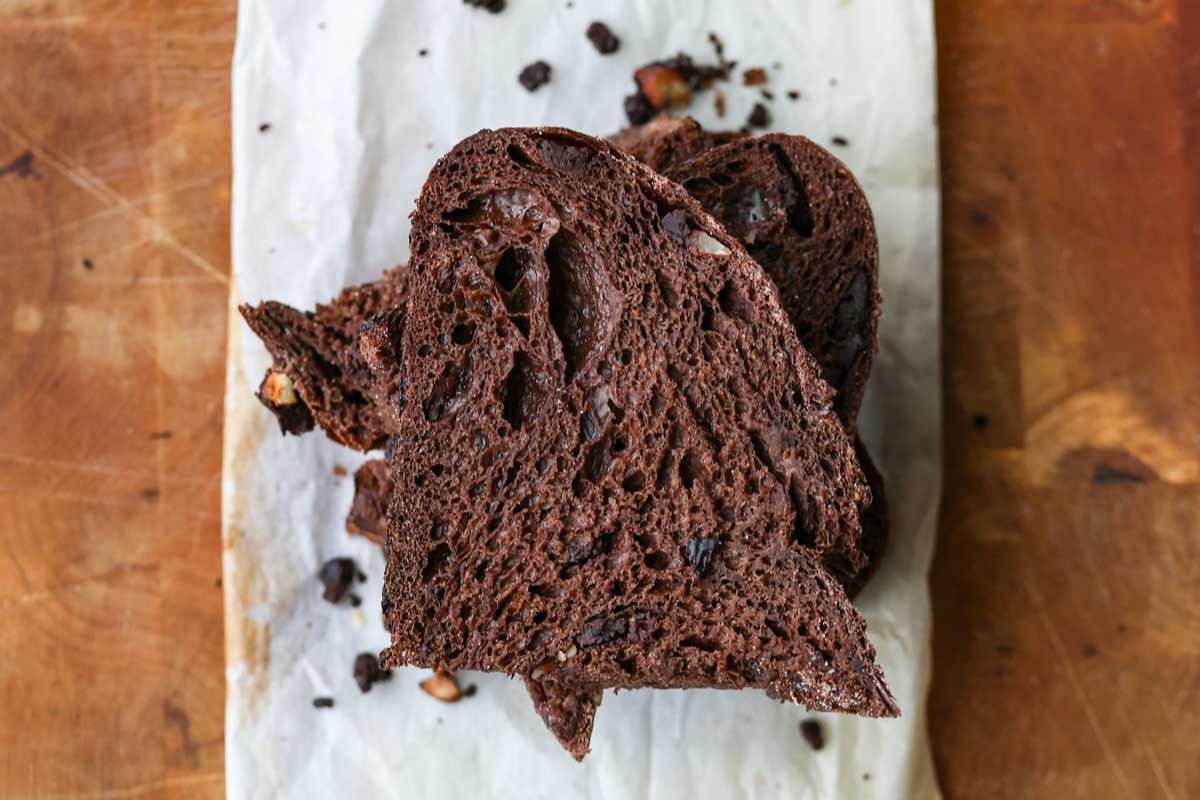
How to serve a chocolate loaf
After 3 hours, this chocolate loaf is ready to be sliced! For a sweet treat, enjoy it with a vegan honey—or try a hot honey for a spicy twist. This bread also pairs wonderfully with berry jams and nut butters like almond, hazelnut, or peanut butter. It also makes an incredible sourdough French toast.
For a savory option, pair it with aged cheeses like sharp cheddar, Gouda, or Parmesan. Serving it with bacon, whether crisp or candied, adds an indulgent contrast.
For an extra dose of chocolate and caffeine, enjoy it alongside a mocha latte. If baking during the summer, pair it with an oat milk shaken espresso for a refreshing treat.
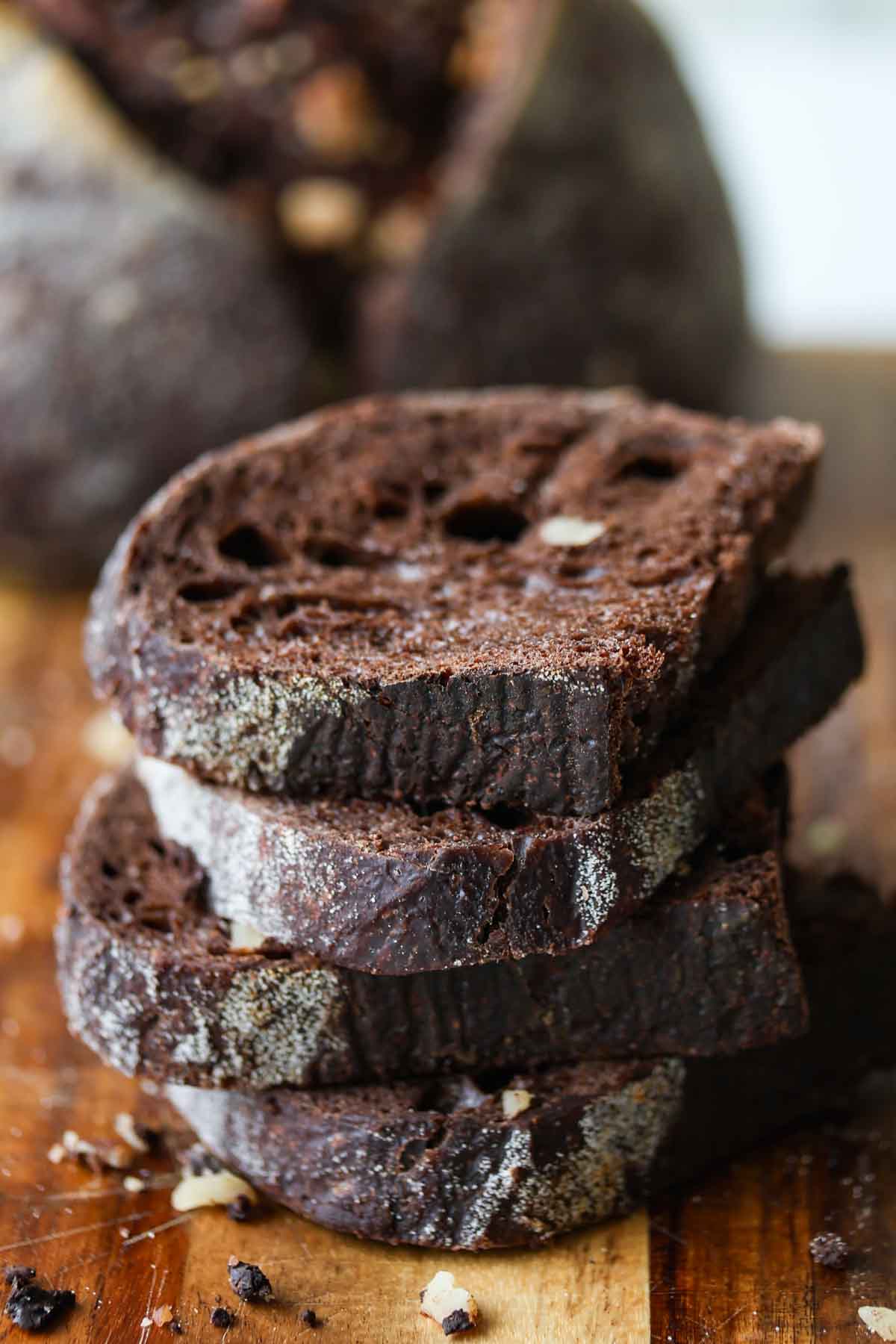
Have you tried this Sourdough Chocolate Bread? Please leave a 🌟 star rating in the recipe card below, I’d love to know how it went!
📖 Recipe
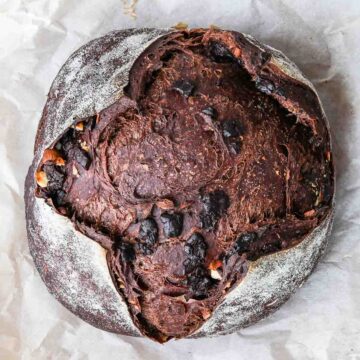
Chocolate Sourdough Bread
This double Chocolate Sourdough Bread is slightly sweet, soft on the inside, and crusty on the outside — a bread you’ll want to make over and over. This full sourdough recipe requires no kneading, with the dough coming together in less than 5 minutes.
Prevent your screen from going dark
Ingredients
Instructions
-
Start by blooming the cocoa powder. In a large bowl, mix the cocoa powder with hot water and whisk until fully absorbed. Let it rest for two to three minutes to cool slightly.
-
Combine the cooled cocoa mixture with the remaining water. Add the active sourdough starter (or chocolate sourdough starter if using one), brown sugar, white bread flour, and fine sea salt, then stir until a shaggy dough forms.
-
Cover the bowl and let the dough rest for 45 minutes to one hour to allow the flour to hydrate.
-
Begin the stretch and fold process by performing four sets of stretches and folds, spacing them 45 minutes to an hour apart. After each fold, rotate the bowl 90 degrees and cover it well to prevent drying.
-
Allow the dough to bulk ferment at a temperature of 21–23°C (70–73°F) for about ten hours, or until it rises by 85%. If you're baking during summer, or if your kitchen is warmer (over 27°C/81°F), reduce the bulk fermentation to six/seven hours and/or limit the rise to 70% to prevent overproofing.
-
When the dough has completed bulk fermentation, shape it by gently stretching it into a rectangle. Add half of the chocolate and almonds, then fold the dough like a letter. Add the remaining add-ins during the next folds, finishing by rolling the dough into a semi-ball. Use your hands to pull the dough toward you to create tension, repeating this process on all sides.
-
Place the shaped dough into a prepared banneton. Using rice flour will prevent the dough from sticking—wheat flour does not have the same effect! Cover it well and refrigerate overnight or for up to 36 hours.
-
When ready to bake, preheat the oven to 500°F (260°C) with a rack positioned in the middle.
-
Remove the dough from the refrigerator and place it in a cold Dutch oven lined with parchment paper. Score the top to control expansion during baking using a sharp blade. For this bread, I score making an "X" on the top.
-
Lower the temperature to 450°F (232°C) and bake with the lid on for 30 minutes. After 30 minutes, remove the lid, lower the temperature to 425°F (218°C), and bake for an additional 20 to 25 minutes, until the internal temperature reaches at least 195°F (91°C).
-
Once baked, allow the bread to cool for at least one hour before slicing. Cutting too soon may result in a gummy crumb.
Notes
Chocolate sourdough tends to ferment more slowly. Be patient and ensure the dough reaches the proper rise during bulk fermentation before shaping and cold fermenting.
Adding chocolate chunks and almonds too early can interfere with gluten strength. It’s best to incorporate them gradually during the stretch and folds or through lamination.
This dough is more fragile due to the cocoa, which weakens gluten structure slightly. Be gentle when shaping to maintain strength.
Cold-proofing for at least 12 hours, and up to 36 hours, deepens the chocolate flavor.
I prefer to use chunks of my favorite dark chocolate (72%), but you can use your favorite chocolate chips or bar. The crumb is just slightly sweet, so if you’re looking for a sweeter bread, using milk chocolate or even white chocolate, if you’re a fan, is a great option to increase the sweetness.
Nutrition
Serving: 1sliceCalories: 218kcalCarbohydrates: 35gProtein: 6gFat: 6gSaturated Fat: 3gPolyunsaturated Fat: 1gMonounsaturated Fat: 1gTrans Fat: 0.001gCholesterol: 0.04mgSodium: 234mgPotassium: 97mgFiber: 2gSugar: 7gVitamin A: 1IUVitamin C: 0.02mgCalcium: 34mgIron: 1mg

